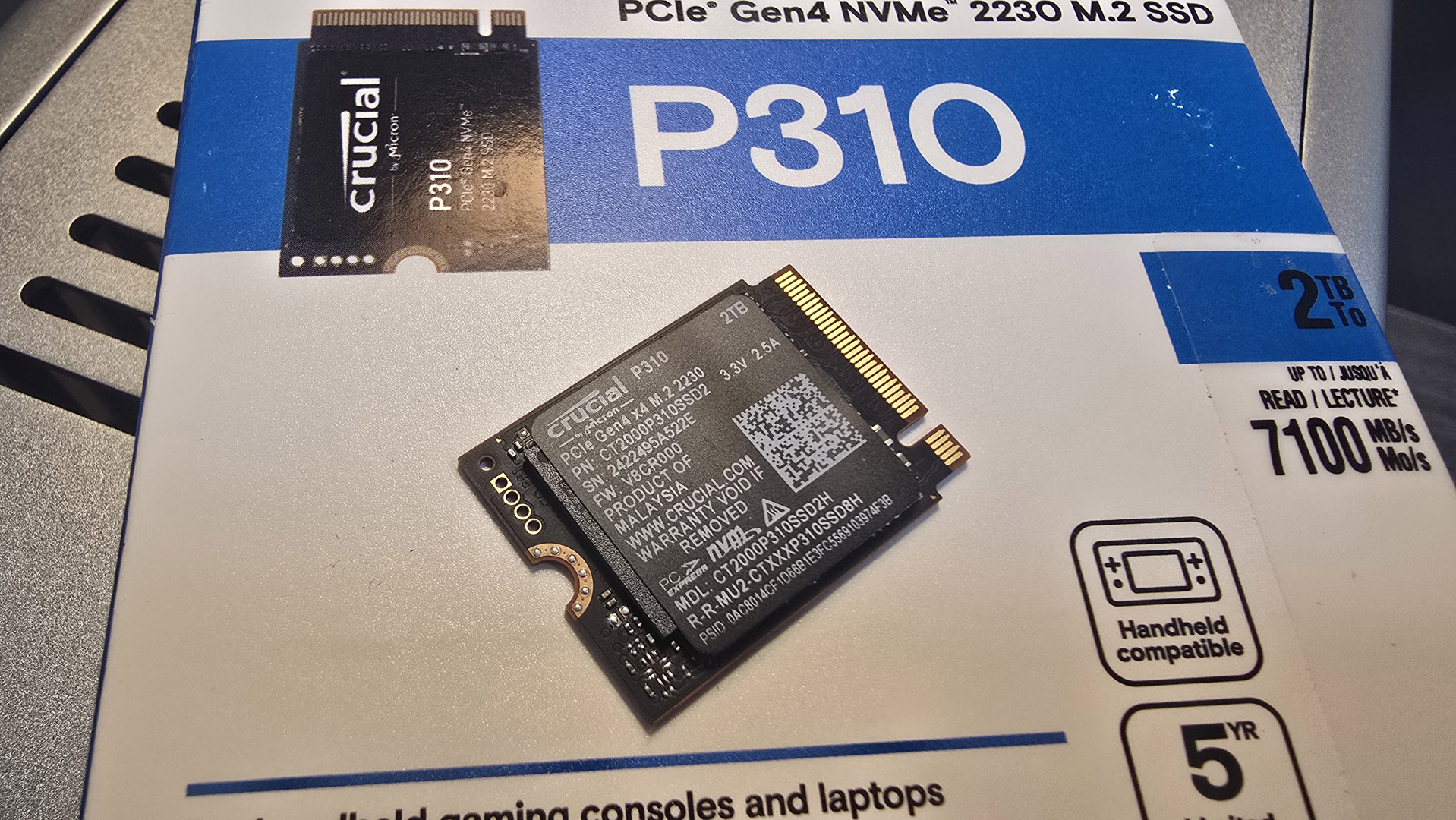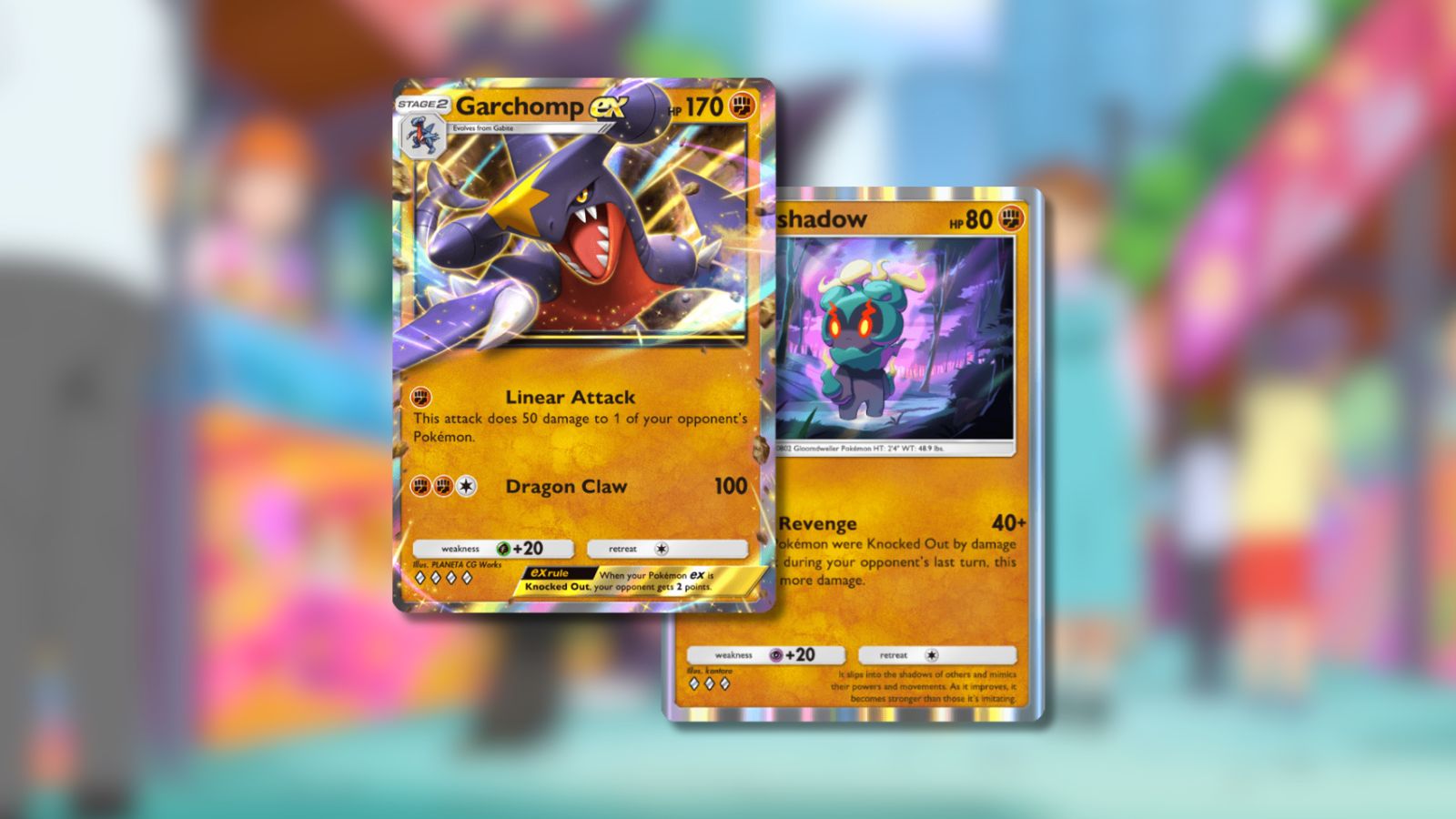
A solid all-rounder, but it offers little over capacity.
It might not be the 1990s anymore (that’s the late 1900s to the Gen Zers), but that doesn’t mean console gaming is done and dusted, no sir. We’ve seen a whole slew of handheld gaming PCs arise over the last couple of years, and with it, a positive boom in the number of folk on the hunt to expand their storage on these plucky little devices too. After all what’s the point of picking up a handheld gaming PC if you can’t, you know, play all your favorite games on it when you’re on the move.
It’s a bit of a complicated mess, that said, the number of handhelds that support the M.2 2230 form factor is numerous, yet with an armada of PCIe drives out there, all touting different hardware configurations in the tiniest of form-factors, finding the right drive is, well, challenging. Crucial’s P310 2TB is breaking the mold a little bit on this one though. Not only is this thing radically affordable, coming in at just $220 for a 2 TB number it also delivers some stellar bursts of performance as it does so regardless of the PCIe spec it’s plugged into. Although with some fairly hefty caveats.
On the surface, the P310 is quite the intriguing prospect. It’s a single-sided M.2 2230 PCIe 4.0 drive (that form factor required to make it compatible with everything from the Steam Deck OLED, to the Asus ROG Ally, to even the biggest of gaming PCs as long as you have a heatsink on your mobo). It’s paired with a Phison E27T controller plus an array of Micron 232-Layer QLC NAND Flash to back it all up.
Now it’s that last part that’s the curious little addition. Although radically more affordable, and typically available in higher densities and capacities, QLC doesn’t usually provide performance at the same caliber as TLC NAND. In my experience, manufacturers will often pair QLC memory with a substantial DRAM cache on the drive to boost up sequential and random 4K performance, but once that cache is filled, that performance generally falls off a cliff. That cache is something the P310 lacks in its controller, so it doesn’t have that “safeguard” so to speak.
Still, that performance degradation just isn’t something I’m seeing. Running it through our suite of benchmarks, and it quite comfortably smashes out read and write speeds well into the 7 and 6 GB/s mark respectively in the sequential tests. Jump into the Random 4K performance (typically more synonymous with how PC games load) and equally figures stays solid throughout that too, snapping up 76 MB/s on the read and 315 MB/s on the write respectively. Compare it to WD’s SN770M (PCIe 4.0 and M.2 2230 as well), and it pips it to the post in both the sequentials and in the random 4K writes here too.
Now it’s worth mentioning I am testing this on one of Asus’s ROG Strix X870E-E Gaming Wifi motherboards, with AMD’s latest Ryzen 9 9900X processor here, and that does come with a fairly meaty heatsink keeping temps under control for it (another factor that can affect long term performance) rather than in an Asus ROG Ally, or one of the numerous other gaming handheld PCs out there. Still this gives us a clear picture of how drives perform in more aggressive testing scenarios than just loading into Siege on a Friday night.
It’s not all roses and rapid load-times though. Interestingly Crucial’s P310 didn’t quite cut the mustard on Final Fantasy’s XIV’s Shadowbringer benchmark. During my tests it scored a fairly average 8.101 second load time total. Now that is slightly faster than the WD Black SN770M 1TB (which clocked in 8.389) but compared to a traditional full sized M.2 such as Silicon Power’s XS70, which similarly is on the Gen 4 platform with near identical sequential read and write speeds, that one slid under that 8 second mark at just 7.729 seconds.
(Image credit: Future)
(Image credit: Future)
(Image credit: Future)
(Image credit: Future)
✅ You need plenty of storage space: You might find you can make do with fewer gigabytes on a handheld gaming PC. However, if you must have the extra room, this is a great pick.
❌ You don’t want to go overboard: This is a great option for 2 TB but you can save yourself a lot of cash on the 1 TB model.
Here’s the thing though, I’m really pulling hairs here. Relatively that’s nanoseconds between the two. Are you going to notice the difference loading in a game from 8.1 to 7.7 seconds? Probably not, and if the alternative is going without that additional storage, well, I’d take the former for sure. It does seem to be a limitation of these smaller form factor drives in general, they just don’t have the loading clout compared to their full-sized brethren.
The battle between the two M.2 2230’s continues particularly in 3D Mark’s Storage test mind you, with the 1TB WD landing an index of 3,056 versus the P310’s 3,075. Yep it’s that close. Bandwidth between the two was 525.69 versus 532.12 MB/s and the average access time equally landed at exactly 59 nano seconds across the two of them. That’s just wild, particularly given how different the configurations are between them. WD is utilizing a bespoke Sandisk controller combined with the far less dense Kioxia 112-layer TLC to make that happen, and yet still, that 232-layer QLC and larger capacity isn’t quite enough to break away in terms of overall performance, at least as far as 3DMark is concerned.
So then. Crucial P310. Good deal? Best SSD? Hmm kinda. It’s a bit on the edge at the minute, although sequential performance is incredibly high in the benchmark runs, this isn’t quite synonymous with the performance that you should expect within its use case. The fact is that this is a drive designed with handheld gaming PCs in mind, and the majority of the time it’s in use, it’ll be loading random game files and assets, rather than reading and writing sequentially. That’s not to say it’s bad, and certainly at $215/£220/AU$300 it does finally provide 2TB worth of expansion to you for your handheld, but you’re only gaining capacity here. If you can live with it and don’t need all of that additional storage, I’d highly recommend saving the cash, ditching the 2TB and getting the 1TB version instead.







